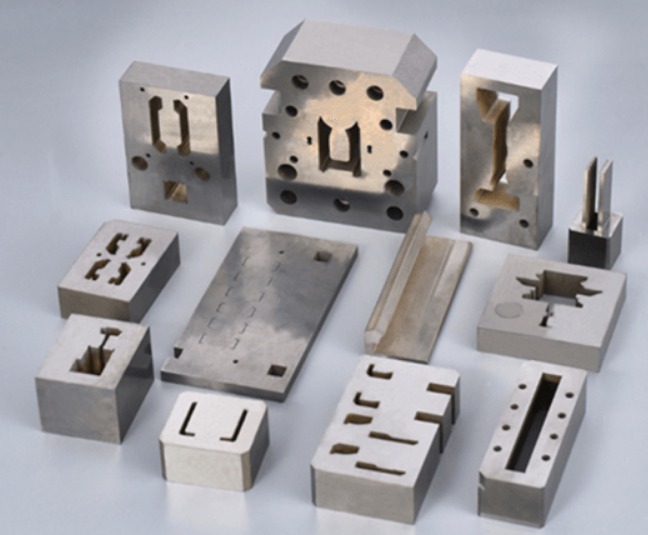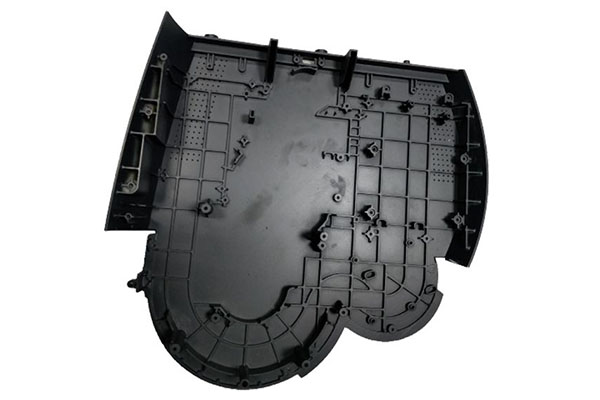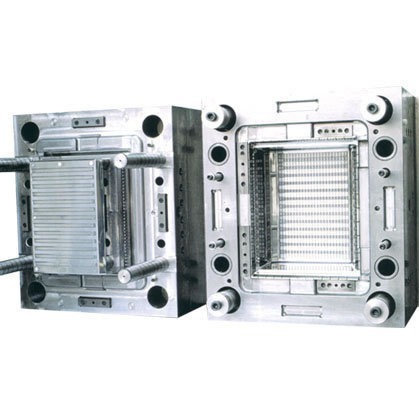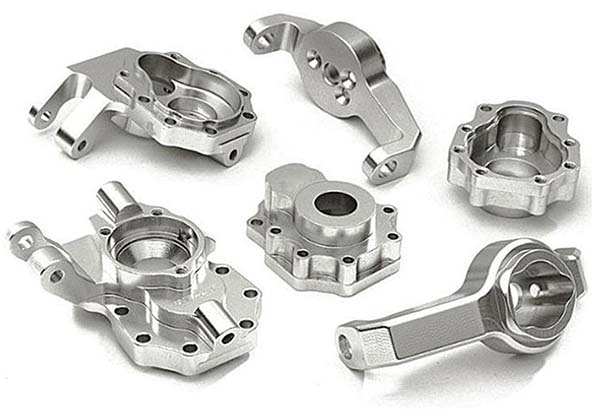Introduction
Understanding Precision Mold Parts
In the world of manufacturing, precision mold parts play a pivotal role. They are the unsung heroes that enable the production of a vast array of products we use in our daily lives, from the tiniest electronic components to large - scale automotive parts. Precision mold parts are components crafted with extreme accuracy, often with tolerances in the micron range. These parts are used to create molds, which in turn are used to manufacture products through processes such as injection molding, die - casting, and stamping.
As manufacturers strive to meet the ever - increasing demands for high - quality products, a deep understanding of precision mold parts becomes essential. In the following sections, we will explore various aspects such as materials used, manufacturing processes, quality control, and cost - related factors to help manufacturers make informed decisions regarding precision mold parts.
Key Aspects of Precision Mold Parts
Material Selection
The choice of material for precision mold parts is critical as it directly impacts the performance, durability, and cost - effectiveness of the final product. Here are some commonly used materials and their characteristics:
- SKH51 (M2 High - Speed Steel)
- Characteristics: SKH51 is a tungsten - molybdenum - based high - speed steel. It has a high hardness, typically reaching HRC63 - 65 after heat treatment. It also offers good wear resistance, excellent red - hardness (ability to maintain hardness at high temperatures), and relatively good toughness compared to some other high - speed steels. For example, it can maintain its hardness even at around 500℃ during high - speed cutting operations.
- Applications: It is widely used in the manufacturing of cutting tools such as drills, end - mills, and saw blades. In the mold - making industry, it is suitable for molds that require high - precision machining of medium - hardness materials like aluminum alloys and medium - carbon steels. For instance, in the production of injection molds for small - to - medium - sized plastic parts with complex geometries, SKH51 can ensure long - term dimensional stability and high - quality surface finishes.
- ASP60 (High - Alloy Powder Metallurgy High - Speed Steel)
- Characteristics: ASP60 has an extremely high hardness, usually HRC67 - 69. It offers outstanding wear resistance due to its fine and uniformly distributed carbide particles. It also has excellent heat - resistance and high compressive strength. Moreover, its toughness is relatively good considering its high hardness.
- Applications: This material is ideal for applications where high - precision and long - life molds are required for processing hard and abrasive materials. In the electronics industry, it is used to make molds for cutting and forming hard materials like silicon wafers. In the automotive industry, it can be used for molds that produce small, high - precision metal components with tight tolerances.
- P20 (Pre - Hardened Tool Steel)
- Characteristics: P20 has a pre - hardened hardness range of about HRC28 - 32. It offers good machinability, which means it can be easily processed using various manufacturing methods. It also has decent corrosion resistance and good polishability.
- Applications: P20 is commonly used for injection molds in the production of plastic products such as toys, household appliances, and consumer electronics. Its pre - hardened state allows for quick mold manufacturing without the need for additional heat treatment after machining, reducing production time and costs.
The following table summarizes the key differences:
| Material | Hardness (HRC) | Wear Resistance | Machinability | Applications |
| SKH51 | 63 - 65 | High | Moderate | Cutting tools, molds for medium - hardness materials |
| ASP60 | 67 - 69 | Very High | Lower than SKH51 | Molds for hard and abrasive materials |
| P20 | 28 - 32 | Moderate | High | Injection molds for plastic products |
Manufacturing Processes
- CNC Machining
- Principle and Process: Computer - Numerical - Control (CNC) machining involves using computer - controlled machine tools to remove material from a workpiece. It can perform operations such as milling, turning, drilling, and boring. The operator programs the machine using G - codes and M - codes to define the tool paths, cutting speeds, and feed rates. For example, in milling, a rotating cutting tool moves along multiple axes to create complex 3D shapes.
- Accuracy and Efficiency: CNC machining can achieve high precision, often with tolerances as low as ±0.001mm. It is highly efficient for producing complex - shaped parts in small to medium - batch production. For instance, when manufacturing a mold cavity with intricate details, CNC machining can quickly and accurately create the required shape, reducing production time compared to manual machining.
- Wire Electrical Discharge Machining (Wire - EDM)
- Principle and Process: Wire - EDM uses a thin, electrically charged wire as an electrode to cut the workpiece. A high - frequency electrical discharge between the wire and the workpiece melts and vaporizes small amounts of material, creating the desired shape. The wire is constantly fed during the process, and a dielectric fluid is used to flush away the debris.
- Accuracy and Efficiency: It can achieve extremely high precision, with tolerances in the range of ±0.0001mm. However, it is a relatively slow process compared to CNC machining. Wire - EDM is best suited for creating parts with complex internal geometries or sharp corners that are difficult to machine with traditional methods. For example, it is often used to cut intricate shapes in hard - to - machine materials like carbide for mold inserts.
- Electrical Discharge Machining (EDM)
- Principle and Process: EDM, also known as spark machining, uses electrical discharges to erode the workpiece. An electrode, usually made of copper or graphite, is placed close to the workpiece, and a series of high - voltage pulses create sparks. These sparks generate intense heat, melting and vaporizing the material at the surface of the workpiece.
- Accuracy and Efficiency: EDM can achieve high precision, especially for complex shapes. It is suitable for machining materials that are very hard or difficult to machine by conventional means. However, it is a slow process and requires careful electrode design. It is often used for creating fine details in molds, such as texturing or creating small holes.
The table below compares the key aspects of these manufacturing processes:
| Process | Precision (Typical Tolerance) | Efficiency | Suitable for |
| CNC Machining | ±0.001mm | High for complex shapes in medium - batch production | General mold parts with various geometries |
| Wire - EDM | ±0.0001mm | Low, slow process | Complex internal geometries, hard materials |
| EDM | High precision for complex shapes | Low, slow process | Hard materials, fine details in molds |
Quality Control
- Dimension Inspection
- Methods and Tools: High - precision measuring tools such as coordinate measuring machines (CMMs) are used to measure the dimensions of precision mold parts. CMMs can accurately measure the length, width, height, and angles of a part. For example, when inspecting a mold cavity, a CMM can check if the internal dimensions match the design specifications within the required tolerances. Laser scanners can also be used to quickly capture the 3D shape of a part and compare it to the CAD model.
- Importance: Precise dimension control ensures that the mold parts fit together correctly during assembly and that the final products produced using the molds have the correct dimensions. Even a small deviation in the mold part dimensions can lead to defects in the final product, such as poor - fitting parts or incorrect functionality.
- Surface Quality Assessment
- Methods and Tools: Visual inspection is often the first step, where inspectors look for surface defects such as scratches, pits, or unevenness. Surface roughness measuring instruments can be used to quantify the surface finish. For example, a profilometer can measure the roughness parameters (Ra, Rz, etc.) of a mold surface. In some cases, electron microscopes may be used to examine the surface at a microscopic level for very high - precision applications.
- Importance: A high - quality surface finish on mold parts is crucial for the quality of the final products. A rough surface on a mold can transfer imperfections to the product, affecting its appearance and functionality. In applications such as optical component manufacturing, a smooth and defect - free mold surface is essential to produce high - quality lenses or reflectors.
- Material Property Testing
- Methods and Tools: Hardness testing is commonly performed using Rockwell, Brinell, or Vickers hardness testers to ensure that the material has the correct hardness as per the design requirements. Tensile testing can be carried out to measure the material's strength and elongation properties. Chemical analysis can be done using techniques like spectroscopy to verify the chemical composition of the material.
- Importance: Material properties directly impact the performance and durability of precision mold parts. Incorrect material properties can lead to premature wear, breakage, or deformation of the mold parts during the manufacturing process, increasing production costs and reducing product quality.
How to Choose the Right Precision Mold Parts
Evaluating Supplier Capabilities
- Equipment Assessment
- High - end manufacturing equipment is a key indicator of a supplier's capabilities. For example, a supplier with advanced five - axis CNC machining centers can handle complex 3D geometries with high precision. These machines can move the cutting tool and the workpiece along five different axes simultaneously, allowing for the creation of intricate mold parts that are difficult to produce with traditional three - axis machines. In contrast, suppliers relying solely on basic two - or three - axis machines may struggle to meet the tight tolerances and complex designs required for modern precision mold parts.
- Sophisticated measuring equipment is also crucial. Coordinate Measuring Machines (CMMs) with high - accuracy probes can measure the dimensions of mold parts with extreme precision, ensuring that they meet the design specifications. A supplier that can accurately measure the length, width, height, and angles of a part within micrometer - level tolerances is more likely to produce high - quality precision mold parts.
- Technical Staff Competence
- The experience and expertise of a supplier's technical staff play a vital role. Engineers with years of experience in mold design and manufacturing are better equipped to handle complex projects. For instance, they can anticipate potential issues during the design phase, such as mold flow problems in injection molding or die - casting, and make appropriate design modifications to avoid defects in the final product.
- Technical staff should also be proficient in using the latest software tools for mold design, such as CAD (Computer - Aided Design) and CAM (Computer - Aided Manufacturing) software. These tools enable the creation of highly detailed 3D models of mold parts, which can be used to simulate the manufacturing process, identify potential design flaws, and optimize the production process.
- Production Experience
- A supplier with a long - standing track record in producing precision mold parts is more reliable. They have likely encountered and overcome various challenges in the manufacturing process over the years. For example, a supplier that has been in the industry for 10 - 15 years is more likely to have dealt with issues like material shrinkage, heat - treatment problems, and surface finish requirements.
- Look for suppliers with experience in your specific industry or product type. If you are in the automotive industry, a supplier with a history of producing precision mold parts for automotive components, such as engine parts or interior trim, will have a better understanding of the specific requirements and standards of the automotive sector, including high - volume production needs and strict quality control requirements.
Yigu Technology's Perspective
As a non - standard plastic metal products custom supplier, Yigu Technology understands the critical role of precision mold parts in modern manufacturing. We emphasize the importance of customized services to meet the unique needs of each client. Our team of experienced engineers works closely with clients from the initial design stage, providing professional advice on material selection and design optimization to ensure the best performance of the precision mold parts.
Equipped with advanced production equipment such as high - precision CNC machining centers and wire - EDM machines, we are capable of handling complex designs with tight tolerances. Our state - of - the - art measuring equipment ensures strict quality control, allowing us to deliver precision mold parts that meet and exceed industry standards. We believe that by combining customized services, advanced technology, and strict quality control, we can help manufacturers achieve their production goals more efficiently and cost - effectively.
FAQ
What factors should be considered when choosing the material for precision mold parts?
When choosing materials for precision mold parts, several factors are crucial. First, consider the mold's application. For molds used in high - temperature environments, like die - casting molds for metals, materials with high heat - resistance such as certain high - speed steels or hot - work tool steels are essential. Second, wear resistance is vital, especially for molds with high - volume production runs. Harder materials with fine carbide distributions, like ASP60 powder metallurgy high - speed steel, offer better wear resistance. Third, the material's toughness should be considered. Molds that may experience impact during operation need materials with sufficient toughness to prevent cracking. Additionally, the machinability of the material affects the manufacturing cost and time. Easier - to - machine materials like P20 pre - hardened tool steel can reduce production time and costs.
How can manufacturers ensure the quality of precision mold parts?
Manufacturers can ensure the quality of precision mold parts through several means. Firstly, establish a strict quality - inspection process. This includes using high - precision measuring tools such as coordinate measuring machines (CMMs) to check the dimensions of the parts. For example, CMMs can accurately measure the length, width, height, and angles of a mold part to ensure they meet the design specifications within tight tolerances. Secondly, select high - quality materials from reliable suppliers. Conduct material property tests like hardness testing, tensile testing, and chemical analysis to verify the material's quality. Thirdly, implement quality control at every stage of the manufacturing process, from raw material receipt to the final product inspection. This can help detect and correct any potential quality issues early on, reducing the production of defective parts.
What are the advantages of using CNC machining in precision mold part production?
CNC machining offers several advantages in precision mold part production. First, it provides excellent precision control. CNC machines can achieve tolerances as low as ±0.001mm, ensuring that the mold parts meet the tight dimensional requirements. This high precision is crucial for producing molds that will result in high - quality final products. Second, CNC machining can handle complex - shaped parts. With multi - axis capabilities, it can create intricate 3D geometries that are difficult or impossible to produce with traditional machining methods. For example, it can accurately machine the complex cavities and cores of injection molds. Third, it has high production efficiency, especially for small to medium - batch production. Once the program is set up, the CNC machine can operate continuously with minimal human intervention, reducing production time and increasing output.








